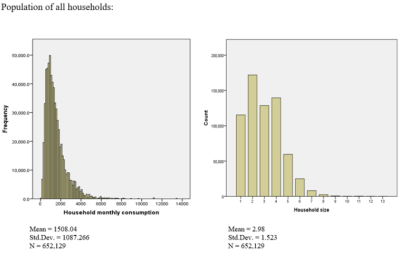The United States recently reached a negative COVID-19 milestone – more than 1 Million deaths. I started to think about writing this blog post last December when the count was ‘only’ 800,000. How do we understand, appreciate and communicate large numbers?
Quantitative literacy can include many different components. One framework I read about (but can’t remember the source!) considered three components: statistical literacy (clearly a component near and dear to the heart of statistician readers), understanding of functional relationships, and having a number sense for appreciating magnitudes. While understanding exponential growth of the number of individuals infected with pandemic virus clearly connects to understanding functional relationships, and statistical literacy is important for thinking about diagnostic test accuracy (and other sources of variability and uncertainty in data), my focus here is on appreciating the magnitude of a number.
Each of the million US COVID-related deaths is a tragic loss for a family and a community. Journalism at its best finds a way to weave a narrative that includes the impact at the smallest scale (individual loss), along with the larger, population impacts. Let’s explore some ways to think about the population impact and how we might represent and better understand the magnitude of a million.
Communicating the magnitude of a million
We might start with thinking about one million in terms of other familiar measurements such as time and distance. One million seconds corresponds to 1.9 years and a million centimeters to 10 kilometers. Perhaps this helps with moving the scale from this single individual to the 1M aggregate, perhaps not.
There are many sources for data related to both the size of the US Population and the number of COVID deaths. Based on a 10 June 2022 review of the census population clock and Johns Hopkins Coronavirus Resource Center dashboard, the US population is reported as 332,760,587 and the current number of reported US COVID deaths is 1,010,807.
Comparing the number of COVID deaths to the size of the US population might provide more insight. The one million deaths out of the 330 million residents suggests that about 0.3% of US residents died of COVID-19. Alternatively, you might report that 1 in every 300 died.
Contextualizing COVID-19 deaths
Previous coverage in The Times of India started with a headline “9/11 every day for 6 months: US Covid deaths explained in Numbers.” Part of this story included comparing COVID deaths up to February 2021 to deaths in war. COVID deaths in the US now exceed the deaths from WW II (405K), the Korean War (36K) and the Vietnam War (58K) combined. At the time of the article, 1 in 670 Americans had died of COVID – a number that would double in the year that followed.
Dr. Anthony Fauci, in a presentation at the American Association for the Advancement of Science (AAAS) meeting, reported a similar comparison of COVID-19 deaths (462K total by 08 February 2021) to war deaths (adding 117K deaths in WW I to the comparison) and major pandemics (100K deaths in 1968 Influenza pandemic and 675K deaths in 1918 Influenza pandemic). He also compared daily COVID-19 deaths in January 2021 (3K/day) with the daily rates of deaths associated with other diseases in the US where daily heart disease caused deaths reported to be 2K/day.
A US News and World Report (R. Abraham and A. Mazumder) included 800K deaths as part of a headline in December 2021 story. In this article, the US death toll was put in the context of “now exceeds the entire population of North Dakota.” The article also described the US as possessing 4% of the world’s population but accounting for 14% of all COVID-19 deaths. Finally, exploration by race-ethnicity categories was a major component of this story.
The Vox story in 2021 “Who has died from Covid-19 in the US?” (Y. Zhou and J. Belluz) provided a story of the expanding impact over time with the first confirmed death in the US due to COVID-19 on Feb. 6, 2020 and the 100K-th death 108 days later. Another 118 days elapsed before the cumulative death count reached 200K. This cumulative death count grew to 300K after another 83 days, and to 400K after another 36 days. A major part of this exploration was the share of deaths in an age group relative to the share of an age group in the population. At that time, 47% of the deaths were among 80+ year olds in the US, an age group that comprised only 4% of the population; 88% of the deaths were among 60+ year olds, an age group that makes up less than a quarter of the population.
Journalistic inspiration
In the coverage of the COVID-19 impact on mortality, connections to deaths in military conflicts or other causes of death provide a context for appreciating the magnitude of the impact of the pandemic virus. Differential impact on particular groups (e.g. 80+ age stratum) was obtained by comparing death in this group to the relative size of the group in the population. Releasing official statistics necessitates the communication and contextualization of large numbers to the public. As I hope that the examples above present, much can be learned from journalists and the narratives that are introduced with these numbers.





